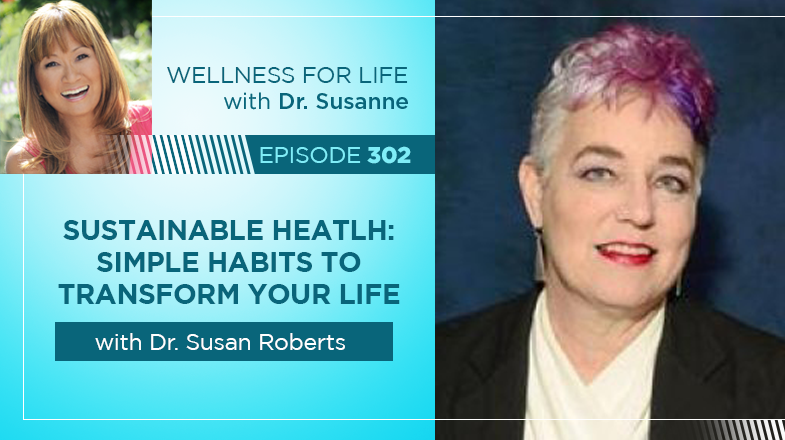
Susan Roberts, MDiv, OTR/L, has spent four decades working as an occupational therapy clinician, treating people of all ages from infants to octogenarians; working with people who have sustained catastrophic accidents and devastating chronic disease. Occupational therapists help people develop habits that transform their lives. Habits so small they sometimes get overlooked by others. Occupational therapists define occupation more broadly than most people. It includes any and all activities including the five occupations that form the framework of her book on Sustainable Health – playing, sleeping, eating, working, and loving.
Although firmly grounded in conventional Western medicine, when some patients began telling her of their experiences with traditional folk healers she saw similarities with occupational therapy. Not only did traditional healers focus on seemingly mundane details, like getting dressed or cooking a meal, but they used very sensory-dense treatments that sounded much like sensory integration, an innovative neurological approach focused on changing the entire nervous system through movement, touch, vision, hearing, smell, and taste. An approach that often produced amazing results with children who had learning disabilities, ADHD, and autism.
It seemed like traditional healers had been using neuro-sensory techniques for millennia and Susan wanted to take a closer look. In those days before integrative, functional, or holistic medicine became popular, Harvard Divinity School provided an opportunity to explore these ideas. Over the years these first inklings of another path to healing included embracing new ideas from physics and a whole new field called psychoneuroimmunology. Cutting edge studies from these and other fields support this notion of our phenomenal ability to grow and recover from unimaginable traumas and dysfunction. It often seems that our science has finally caught up to truths traditional healers have known forever. Their low tech approach to healing has always made it sustainable, relying more on energetic practices than material goods.
Susan’s spiritual practice began in a world filled with magic and wonder, on land her great grandfather purchased in Maine during the early years of the twentieth century. She learned from her elders that all plants had fairies living within them and that picking these plants destroyed the fairies’ homes. Susan grew up taking care not to get caught willfully damaging plants, and searching for the fairies that lived within them and the streams, lakes, rocks, and other special places.
Susan encountered her first “healing compass” of natural elements in Starhawk’s The Spiral Dance, recognizing similar compass configurations in the work of Southwestern artists and their commonalities with traditional healers’ “medicine wheels.” Her theological journey through Harvard Divinity School provided additional spiritual literacy and an academic perspective on “how” medicine wheels get constructed and used. The “why” ran deeper, requiring an intuitive, mystical, connection with a conscious universe. While at Harvard Susan developed a bead meditation for women, weaving together ideas from neurophysiology, feminist theology, and ritual.
More recently her studies have taken her to the Institute of Integrative Nutrition and The Dragon’s Way practice of Traditional Chinese Medicine. Studying Five Element Theory as part of her Dragon’s Way instructor training provided the key that linked together all of her previous work and gave birth to the Healing Compass and her book on Sustainable Health. Susan currently designs rituals that help people navigate transitions in health, work, and relationships.





